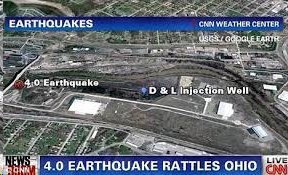Commentary by S. Tom Bond, Jane Lew, Lewis County, WV
1. The top ten well-pads in Pennsylvania [in 2013] have produced 820 million dollars worth of natural gas, with estimated total royalty payouts of over 100 million dollars. These values are based on a total production of 245 million Mcf, at-the-wellhead pricing of $3.35/Mcf (the most recent pricing published by the US Energy Information Administration), and estimated 1/8th royalty payments (no allowances for production deductions). The residential pricing value of the produced gas is 2-1/3 billion dollars.
www.MarcellusGas.org 30 May 2014
With a few wells like this, no wonder the urban gambling investors are ready to despoil the countryside! Perhaps they think all Marcellus wells are as good.
2. The Bazhenov in Russia may be the largest shale play on earth. 80 times bigger than the Bakken. Despite the threat of sanctions hanging over Russia because of the standoff with Ukraine, Russian oil and gas opportunities like the Bazhenov appear to be too lucrative for Western companies to pass up, as follows:
http://www.forbes.com/sites/christopherhelman/2012/06/04/bakken-bazhenov-shale-oil/
ExxonMobil and Statoil have joint ventures with Rosneft, the Russian company. Not a drop of national loyalty to the U. S. to be seen here. Both the U. S and Norway (to a much lesser extent) are at loggerheads with Russia over Ukraine, while the oil companies are kissing Russia up, trying to get the oil.
3. Between 1967 through 2000, there were an average of 21 earthquakes yearly above magnitude 3.0. That rate shot up to an average of 300 earthquakes yearly after 2010. Because of the recent jump in earthquakes, and their significant size, the USGS plans to estimate the national shaking risk from “induced seismicity” for the first time, as follows:
http://news.yahoo.com/fracking-linked-earthquakes-may-strike-far-wells-133057848.ht
Ever see the old physics demonstration where the instructor fills a one gallon jug with water, inserts a cork so no air is between the cork and the water, then hits the cork lightly? The jug breaks easily. The identical force applied by one square inch of cork applies to each and every square inch of the interior of the jug.
Imagine the force that develops down the well when the equivalent volume of many tankers of water are forced down it day after day!
4. In 2013, the average total water volume for a fracturing event at a Pennsylvania unconventional well site was 5,365,363 gallons – the equivalent of 670 full tanker trucks. This is a 25% increase when compared to the average volume of water used per event in 2012 (4,259,693 gals). Our review of fracturing events shows the highest water usage recorded was nearly 19 million gallons. On February 15, 2012, the DCNR 595 6H well in Bloss township Tioga county, operated by Seneca Resources Corp, used 18,754,176 gallons of water for a fracturing event – enough to fill over 2,340 tanker trucks.
www.MarcellusGas.org 5/2/14
This “670 full tanker trucks average” is 96 truckloads of water a day for 7 days or one every 15 minutes, day and night for a full week. Noise, dust, diesel odors, lights at night, harrowing traffic conditions, school bus risk; and if rural, road destroyed, flag men, livestock and crops affected. If only Aubrey McClendon and Rex Tillman could live in such luxury, they would understand “externalized cost.”
5. Aubrey Miller found 52,000 unconventional (shale) gas wells in the U. S., yet when he searched the literature for research, he found little. “How do we have no data on an enterprise of this magnitude?”
The short answer: Because the industry doesn’t want any data let out.
Tomorrow, let’s focus on West Virginia specifically.
>>> Tom Bond is a retired professor of chemistry and resident farmer in central West Virginia <<<


{ 1 comment… read it below or add one }
Thanks to Laurel Peliter for conection to these facts at
line:
http://www.environmentmaryland.org/reports/mde/fracking-numbers
Table ES-1. National Environmental and Public Health Impacts of Fracking
Fracking Wells since 2005 82,000
Toxic Wastewater Produced in 2012 280 billion gallons
Water Used since 2005 () 250 billion gallons
Chemicals Used since 2005 2 (billion gallons
Air Pollution in One Year 450,000 tons
Global Warming Pollution since 2005
100 million metric tons CO2-equivalent
Land Directly Damaged since 2005 360,000 acres